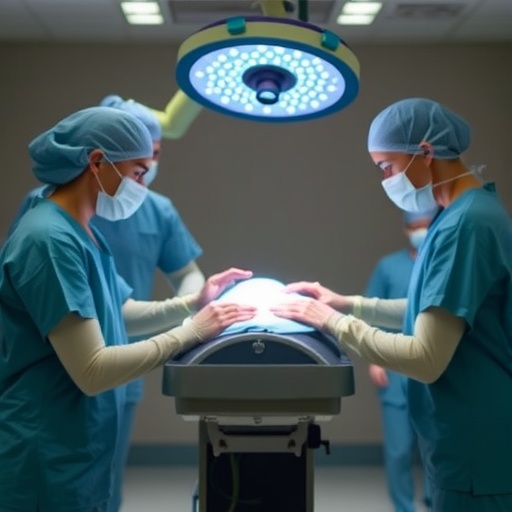Viruses are extremely efficient at targeting and delivering cargo to cells. In the journal ACS Nano, researchers report they have harnessed this well-honed ability — minus the part that makes us sick — to develop virus-like nanoparticles to deliver drugs straight to affected cells. In lab tests, they show that one such particle can be produced in plants and it ferries small molecules to cancer cells.
For this work, Frank Sainsbury and colleagues copied the core protein shell of the Bluetongue virus, a pathogen that affects ruminant animals. Previous research has shown that the capsid is stable, has a large cavity for small molecules or proteins to pack into, and is easy to produce with high purity. The researchers wanted to try making the virus-shell nanoparticles using plants. This is an increasingly popular approach to producing pharmaceuticals as it minimizes possible contamination by human pathogens, which plants don't carry. But first they needed to understand the structure of the shells.
Using single particle cryo-electron microscopy, the team showed for the first time that the recombinant shell nanoparticles produced by plants were different from the natural virus capsid. With the nanoparticles' detailed structure in hand, the researchers then genetically and chemically engineered them to their specifications, and loaded proteins and small molecules inside the shells. Lab testing showed that the plant-made virus particles, which naturally bind to receptors on cancer cells, were taken in by human breast cancer cells. The findings suggest the nanoparticles can potentially be used for the targeted delivery of drugs.
###
The authors acknowledge funding from the Australian Research Council, the U.K. Biotechnological and Biological Sciences Research Council and the John Innes Foundation.
The paper's abstract will be available on Feb. 15 here: http://pubs.acs.org/doi/abs/10.1021/acsnano.6b07747
The American Chemical Society is a nonprofit organization chartered by the U.S. Congress. With nearly 157,000 members, ACS is the world's largest scientific society and a global leader in providing access to chemistry-related research through its multiple databases, peer-reviewed journals and scientific conferences. ACS does not conduct research, but publishes and publicizes peer-reviewed scientific studies. Its main offices are in Washington, D.C., and Columbus, Ohio.
To automatically receive press releases from ACS, contact [email protected].
Follow us: Twitter | Facebook
Media Contact
Katie Cottingham
[email protected]
301-775-8455
@ACSpressroom
http://www.acs.org
############
Story Source: Materials provided by Scienmag




